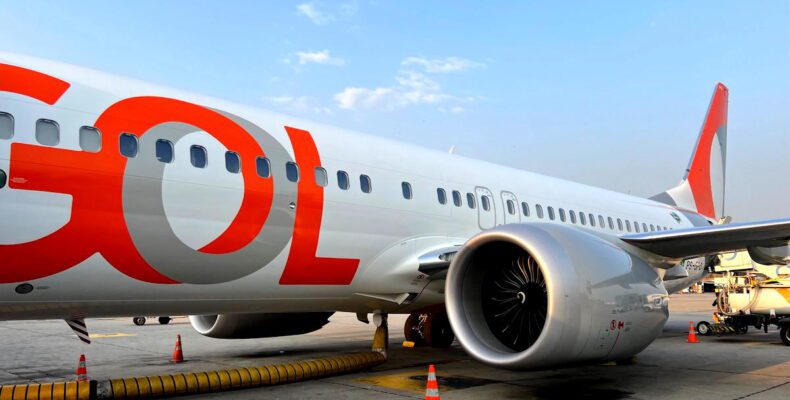Brazil’s second and third largest airlines are working toward a merger, which would potentially elevate them to the pinnacle of the Brazilian aviation world—well, sort of. It’s quite the saga brewing over the skies of Brazil!
Azul & GOL Want to Merge, Maintain Separate Brands
Azul and GOL are actively exploring the possibility of a merger, having signed a non-binding memorandum that sets the wheels in motion. If this partnership materializes, we could witness the birth of Brazil’s largest airline, capturing almost 60% of the domestic market and exceeding LATAM Brazil’s reach. And get this—despite this mega merger, both airlines plan to keep their brands intact. Talk about a twist in the tale!
Now, for a little background on these two aviation players:
- Azul boasts a fleet of around 160 aircraft, with an additional 80 on order. Their lineup includes Airbus A320neos, A321neos, A330-200s, A330-900neos, ATR 72-600s, and Embraer E195s alongside E195-E2s.
- GOL operates with around 130 planes, also with about 100 on order, all of which are exclusively Boeing 737s, covering models like the 737-700, 737-800, and the snazzy 737 MAX 8.
Now, supporters of this burgeoning merger argue that it could lead to improved connectivity and lower capital costs, giving the duo more leverage when bargaining with aircraft manufacturers. While there are concerns about competition, both airlines point to examples from around the globe, suggesting that dominant airlines can coexist successfully. Lufthansa in Germany is often cited; although whether that’s a shining example or not is up for debate. 😉
A noteworthy aspect to keep in mind is that GOL’s majority investor is Abra Group, which is also leading the charge for Avianca, another South American giant. Rumors of Azul and GOL’s talks have been swirling for quite some time, especially given the myriad challenges facing aviation in South America. Both airlines have seen budgets take a nosedive—GOL filed for Chapter 11 bankruptcy protection back in June 2024 while Azul has been making strategic deals with lessors to swap out debt for equity.
If this merger does take off, the new entity would feature a nine-member board—three appointed by Azul, three by Abra, and three independently selected. Azul would name the CEO while Abra would choose the chairman. Sounds pretty corporate, doesn’t it?
Now, the road to regulatory approval can be rather bumpy in Brazil. However, both airlines are passionately pushing the narrative that they’re complements to one another, considering 90% of their routes don’t overlap. GOL primarily flies to Brazil’s biggest cities—Sao Paulo, Rio de Janeiro, and Brasilia—while Azul is more focused on diverse routes.
My Take on a Merger Between Azul & GOL
So, let’s get down to it—what’s my take? Honestly, I think there could be value in this merger—and it might just end up being a win for consumers.
First, let’s lay it on the table: the aviation scene in South America has been turbulent, to say the least. Airlines have been going through bankruptcy like it’s a rite of passage, which clearly signals a broader issue with profitability in the region. While we’ve seen a fair bit of consolidation, perhaps this merger really could tap into some uncharted potential.
If you observe closely, Azul and GOL seem to have more in common than you’d think. Here’s a quick rundown of why they might actually mesh well:
- The two airlines have a surprisingly similar vibe and business model, kind of like a South American JetBlue—Azul was actually founded by David Neeleman, the same fellow who started JetBlue.
- While their combined fleet may look like a mismatched puzzle, their offerings are fairly similar. For instance, on narrow-body planes, both airlines lack a traditional business class. Instead, they offer a “premium” product featuring extra legroom, though GOL blocks middle seats while Azul opts not to.
- One quirk about Azul? They run long-haul flights out of Viracopos International Airport (VCP) instead of the more conventional Sao Paulo Guarulhos Airport (GRU).
- Imagining a future with a joint airline gives me hope for enhanced connectivity, bringing better feed to Azul’s long-haul flights.
- It seems plausible that the merged airline could align with an alliance—SkyTeam is off the table due to Delta’s stake in LATAM, but perhaps oneworld or Star Alliance could be a fit.
- The whole idea of maintaining separate branding is a puzzle to me. You’d think consolidating under one brand would present a smoother path, but perhaps this would appease regulators craving a sense of competition?
Overall, I’m quite intrigued to see how this unfolds. Personally, I see a solid opportunity for Azul to enhance its long-haul network through improved connectivity, which could be a game-changer.
Bottom Line
In a nutshell, Azul and GOL are making strides toward a marriage of sorts to create Brazil’s largest airline. While they intend to keep their individual brands, the overarching goal is improved connectivity and lower capital costs.
Typically, mergers can spell bad news for consumers, but in this case, I genuinely see potential. It feels like Azul has yet to reach its full capabilities, and maybe this merger could shake things up in a positive direction. Let’s just keep our fingers crossed that bureaucratic hurdles don’t stymie their plans.
What are your thoughts on the potential merger between Azul & GOL?
